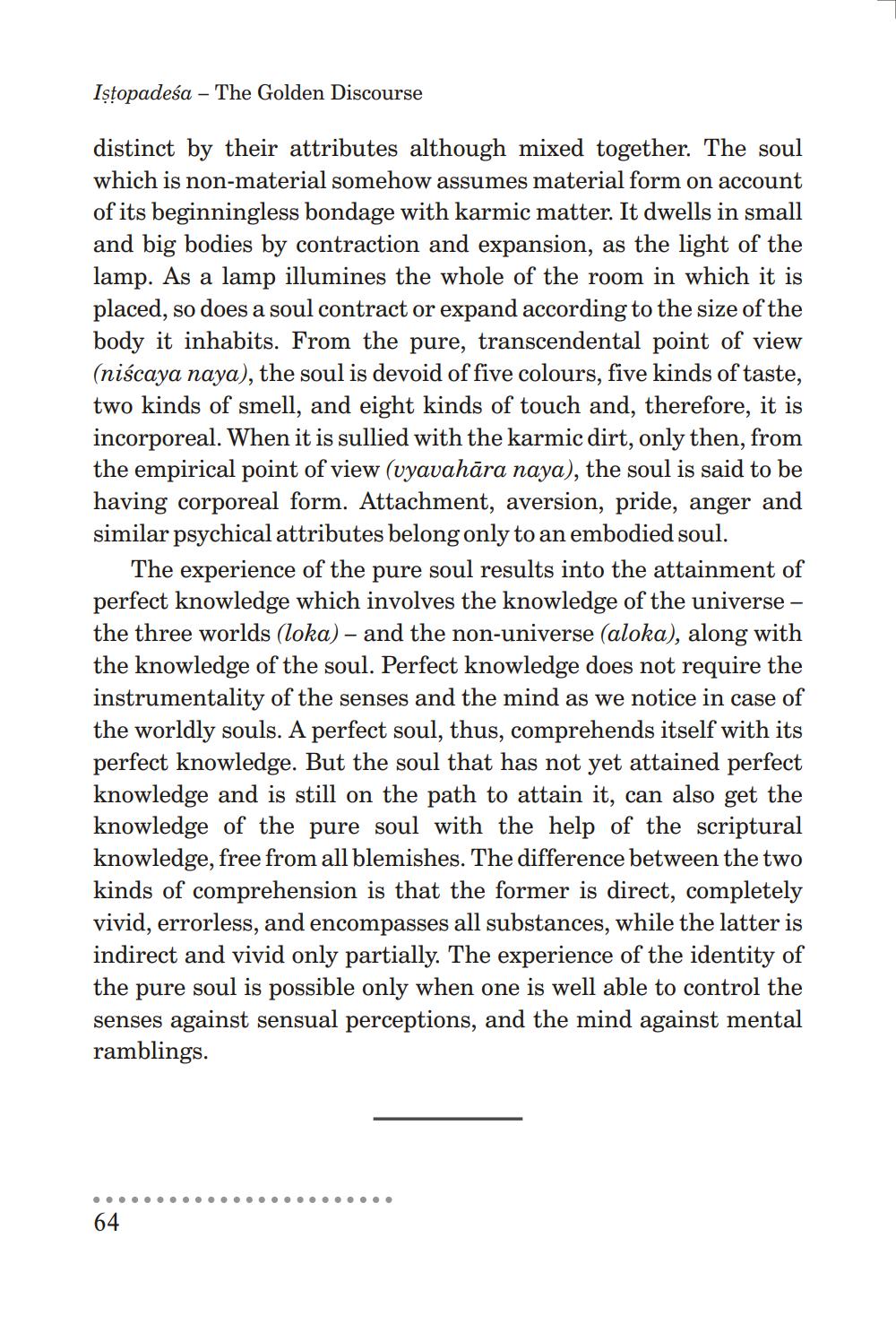________________
Iṣṭopadeśa - The Golden Discourse
distinct by their attributes although mixed together. The soul which is non-material somehow assumes material form on account of its beginningless bondage with karmic matter. It dwells in small and big bodies by contraction and expansion, as the light of the lamp. As a lamp illumines the whole of the room in which it is placed, so does a soul contract or expand according to the size of the body it inhabits. From the pure, transcendental point of view (niścaya naya), the soul is devoid of five colours, five kinds of taste, two kinds of smell, and eight kinds of touch and, therefore, it is incorporeal. When it is sullied with the karmic dirt, only then, from the empirical point of view (vyavahāra naya), the soul is said to be having corporeal form. Attachment, aversion, pride, anger and similar psychical attributes belong only to an embodied soul.
The experience of the pure soul results into the attainment of perfect knowledge which involves the knowledge of the universe - the three worlds (loka) - and the non-universe (aloka), along with the knowledge of the soul. Perfect knowledge does not require the instrumentality of the senses and the mind as we notice in case of the worldly souls. A perfect soul, thus, comprehends itself with its perfect knowledge. But the soul that has not yet attained perfect knowledge and is still on the path to attain it, can also get the knowledge of the pure soul with the help of the scriptural knowledge, free from all blemishes. The difference between the two kinds of comprehension is that the former is direct, completely vivid, errorless, and encompasses all substances, while the latter is indirect and vivid only partially. The experience of the identity of the pure soul is possible only when one is well able to control the senses against sensual perceptions, and the mind against mental ramblings.
64




